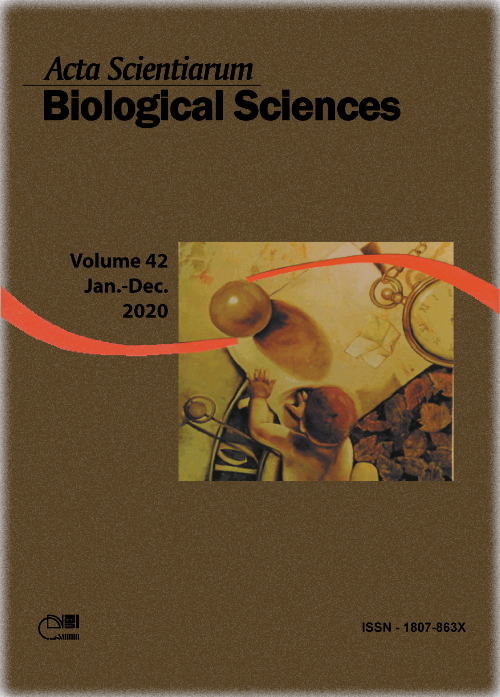Induction, biochemical trait and phytochemical screening of calluses of Amburana cearensis (Allemão) A.C. Smith
Resumo
Amburana cearensis is an arboreal legume of the Fabaceae family, with high phytotherapic and medicinal potential due the presence of secondary metabolites. The objective of this study was to evaluate the effect of 2,4-dichlorophenoxyacetic acid (2,4-D) and 4-amino-2,5,6- trichloro-2-pyridinecarboxylic acid (picloram) on the in vitro induction of callogenesis of A. cearensis and analyze the biochemical and phytochemical potential of these calluses. For callus induction, leaf and cotyledon segments were used as explants, which were inoculated in woody plant medium (WPM) supplemented with different concentrations of 2,4-D (0, 5, 10, 20, 40 μM) or picloram (0, 5, 10, 20, 40, 80 μM). The callus growth curve was estimated based on fresh weight, measured at 7-day intervals until 28 days after inoculation. The calluses were analyzed by biochemical tests to quantify the reducing sugars and total proteins. Phytochemical screening and high-performance liquid chromatography were performed to establish the phytochemical profile of extracts from calluses. The concentrations of 21.94 μM and 26.46 μM of 2,4-D induced the greatest formation of compact and friable calluses from the leaf and cotyledon segments, respectively. The growth curve had two distinct phases (lag and exponential) for both types of calluses evaluated. The maximum levels of reducing sugars and total proteins in the calluses from leaf and cotyledon segments were obtained on the day of inoculation and after 28 days of cultivation, respectively. The results of the phytochemical analysis identified the presence of coumarin in all the extracts evaluated, this secondary metabolite has high pharmacological potential.
Downloads
Copyright (c) 2020 Acta Scientiarum. Biological Sciences

This work is licensed under a Creative Commons Attribution 4.0 International License.
DECLARAÇÃO DE ORIGINALIDADE E DIREITOS AUTORAIS
Declaro que o presente artigo é original, não tendo sido submetido à publicação em qualquer outro periódico nacional ou internacional, quer seja em parte ou em sua totalidade.
Os direitos autorais pertencem exclusivamente aos autores. Os direitos de licenciamento utilizados pelo periódico é a licença Creative Commons Attribution 4.0 (CC BY 4.0): são permitidos o compartilhamento (cópia e distribuição do material em qualqer meio ou formato) e adaptação (remix, transformação e criação de material a partir do conteúdo assim licenciado para quaisquer fins, inclusive comerciais.
Recomenda-se a leitura desse link para maiores informações sobre o tema: fornecimento de créditos e referências de forma correta, entre outros detalhes cruciais para uso adequado do material licenciado.











1.png)

















